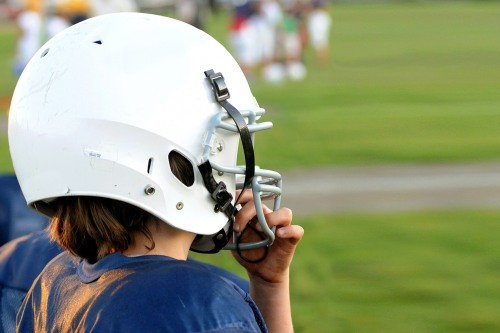Brown University: $10 million federal grant expands research to protect against concussions
Despite mounting concerns about concussions affecting athletes, soldiers and others, these injuries remain frustratingly difficult to prevent or even diagnose.
A research collaboration including three Brown University professors has been working toward a comprehensive understanding of traumatic brain injury — linking the damage occurring at the cellular level in the brain with the forces and motions involved in blows to the head. The collaboration, called PANTHER, ultimately aims to develop new ways of detecting when a concussion has occurred, and new helmet technologies that better protect against them.
Now, that work is set to expand thanks to a new $10 million grant from the Office of Naval Research within the U.S. Department of the Navy.
“Concussions are insidious injuries because there are often no outward signs that an injury has happened,” said Haneesh Kesari, an assistant professor in Brown’s School of Engineering who works on the project with fellow faculty members Diane Hoffman-Kim and David Henann. “So there’s a need to find new detection methods, and that requires a better understanding of the mechanisms underlying these injuries. That’s what we’re trying to do.”
PANTHER is led by Christian Franck, a professor at the University of Wisconsin-Madison who launched the project at Brown in 2017, when he was a professor in the School of Engineering. Franck is developing new techniques for imaging damage to individual cells following trauma, and is working to precisely quantify the forces required to cause that damage.
Hoffman-Kim, an associate professor of medical science and engineering, is working to take Franck’s single-cell research to the level of cell clusters. She works with mini-brains, 3D cultures of brain cells that mimic the basic functions of actual brains. Using mini-brains, the researchers are hoping to learn more about the chemical signals exchanged between cells in response to trauma. Those signaling pathways could potentially serve as a means of concussion detection.
“Mini-brains are really just balls of cells, but they have electrical activity, capillary networks and they reliably approximate the cell density and the stiffness of the brain, which is all relevant to what we’re studying,” said Hoffman-Kim, who is affiliated with Brown’s Carney Institute for Brain Science. “With the PANTHER collaboration, we will be able to use mini-brains to do real-time injury detection and get a handle on the biochemical signals that occur as an injury progresses.”
Kesari and Henann will work on computational methods that link those internal cellular injuries to external stresses and strains. The goal is to create high-fidelity computer models of the head, neck and brain that can capture injury dynamics both inside the brain and out.
“Diane’s and Christian’s work tells us the amount of stress or strain inside the brain that leads to injury,” Kesari said. “Then the question becomes: If a football player is running down the field and takes a hit, how does that external force translate into internal strain? So my work is to connect those physical motions with strains inside the brain.”
Eventually, the team would like to develop sensors that can be placed inside helmets that can detect impacts delivered with sufficient force to cause internal damage.
“You can think of it like a Fitbit for the head,” Kesari said. “The idea is that you’re monitoring all the time, so when a damaging impact happens you can intervene immediately.”
The team is also working with an industry partner, helmet-maker Team Wendy, to translate new information about the concussion process into new helmets that are better at preventing brain injury.
Hoffman-Kim says she’s happy to be part of an effort that has the potential to help so many people.
“I’m the mom of two boys who played sports all through high school,” she said. “I think a lot of us have heard, ‘No, mom, it’s fine; I can go back on the field.’ But we know that repeated traumatic brain injuries can cause long-term problems. If we can make progress in detecting the initial injury, hopefully we can prevent some of those longer-term problems.”

